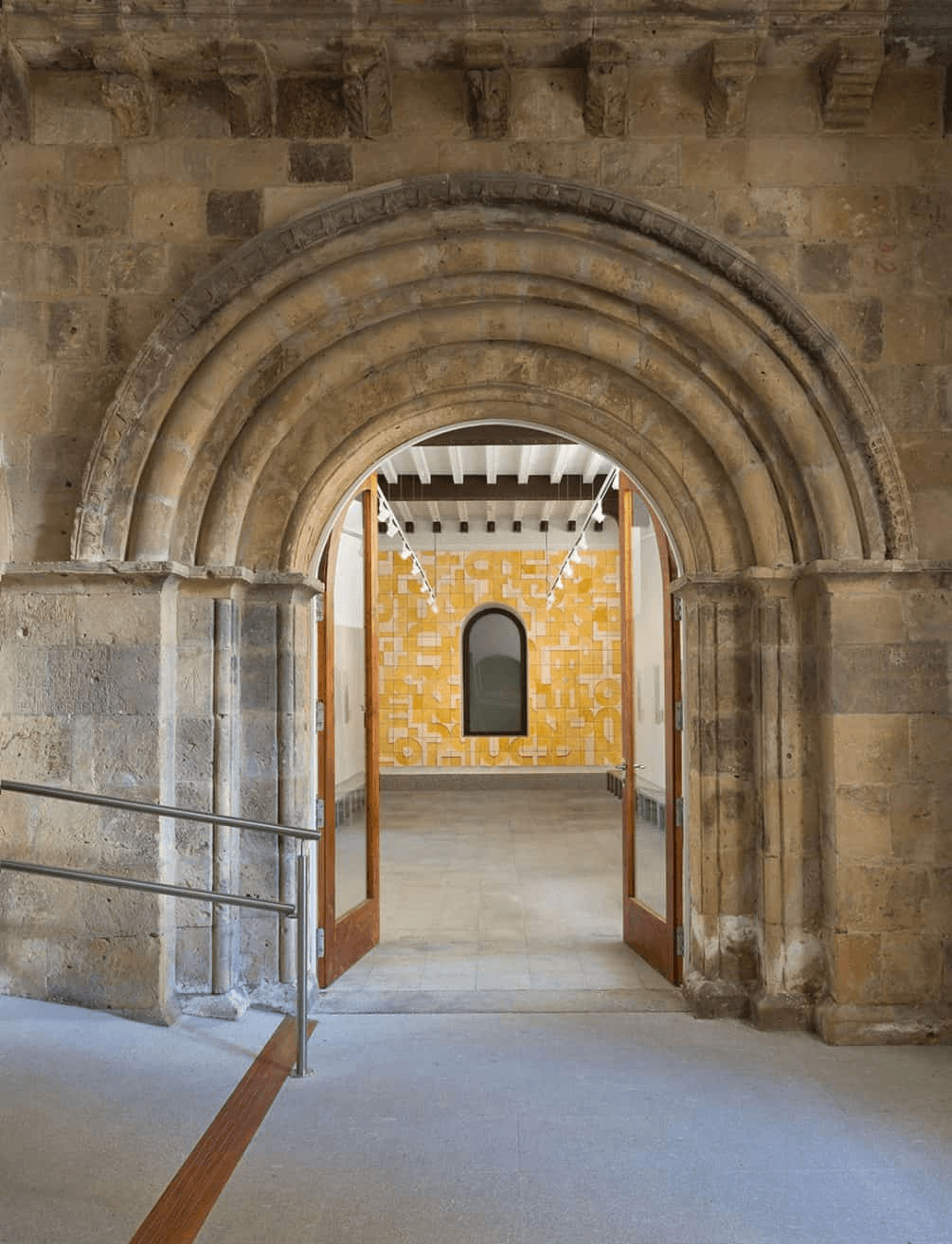Segovia reopens its new Public Library-Reading House remodeled by architecture students
Segovia city council timed the recent opening of its new Public Library-Reading House to coincide with International Library Day. The refurbishment project design was the work of a group of architecture students from IE School of Architecture and Design, guided by Professor and Doctor of Architecture Romina Canna.
Segovia city council timed the recent opening of its new Public Library-Reading House to coincide with International Library Day. The refurbishment project design was the work of a group of architecture students from IE School of Architecture and Design, guided by Professor and Doctor of Architecture Romina Canna.
Participants in the opening ceremony included Clara Luquero, Mayor of Segovia, Salvador Carmona, Rector of IE University, Martha Thorne, Dean of IE School of Architecture, David Goodman, director of IE’s Bachelor in Architecture, Marifé Santiago, Councillor for Culture, and Romina Canna, IE professor and director of IE’s DE-Lab, along with other members of Segovia’s regional authorities and academics.
Until recently, the building had housed Segovia’s public library, founded in 1842, and was at one time used as a jail where Lope de Vega was kept prisoner in the year 1577. The building is located in Calle Real, one of Segovia’s main thoroughfares, and is one of the city’s most interesting examples of public buildings from the renaissance period.
In order to prepare a refurbishment plan aimed at adding key new functions to the building, Segovia’s city council enlisted the help of IE’s design laboratories, D-Lab and FabLab, as part of the institutional collaboration agreement between Segovia City Council and IE University.
“Five years ago we decided to invest the work carried out in our classrooms in the city of Segovia. At the time, Segovia’s city council was facing the challenge of building a “city” within its historic center, and we proposed that we contribute our innovative ideas and energy in a joint effort to respond to the challenge at hand,” says Professor Romina Canna. “Rather than produce theoretical knowledge from within the university, we decided to act as an alternative partner by putting forward projects. D-lab serves as a bridge between academic education and professional practice.”
The result is the Reading House, a highly original and innovative project which uses architectonic features to distinguish spaces based on what they will be used for. This has been achieved using color, furnishings and decorative features that reflect the city’s personality and multiculturism, as well as references to reading and writing.
The Public Library-Reading House offers rooms for study and the consultation of reference books in different spaces. The aim is to provide an intergenerational connection, and to make the Reading House into a meeting point, as explained by Clara Luquero, Mayor of Segovia,
The ground floor is made up of La Plaza (The Square), which is an exhibition and activity area, the Book Park, which is the children’s area, and the Cloister, which is the reading area. The first floor houses an informal reading room, the main reading room, the study room, and the Luis Javier Moreno room located in the old chapel, which will be used for activities and meetings. The new building is eminently sustainable, can be accessed by everyone, and is open to diversity and the concept of democratic heritage.
D-Lab
Romina Canna explains that the overriding objective of the D-Lab is to provide students with practical experience while they are in the process of acquiring the tools of the discipline and have not yet encountered the complications that face a professional in the field of architecture. “Students also have the opportunity to form part of the community and perform the dual role of designers and users. The challenge of shifting from theory to practice requires growth and hard work. The Reading House re-modeling project enabled them to learn to adapt to external circumstances and to be more critical of what they do and how they do it.”
Professor Canna also underlined the way all members of D-Lab get to experience what it is like to form part of a team. “When they work together they share more than work, they share stories, ideas and skills, and the result is a highly intense professional and social experience.
